PRK Laser Eye Surgery
Sub Title
What Is Photorefractive Keratectomy (PRK)?
A PRK procedure fixes refractive errors by using an excimer laser to reshape the cornea. First, your surgeon will gently remove the surface cells (epithelium) on the surface of the cornea. Then, using a cool excimer laser, your surgeon reshapes your cornea to correct your vision.
This type of refractive surgery has identical outcomes to LASIK. The vast majority of patients who receive PRK get 20/20 vision without glasses or contacts. PRK is a better alternative to LASIK for many patients who have thin or irregularly shaped corneas, who have pre-existing chronic dry eye, or those who perform sports with a lot of direct contact to the eyes (ex: Boxers, Ultimate Fighting Champions, etc).
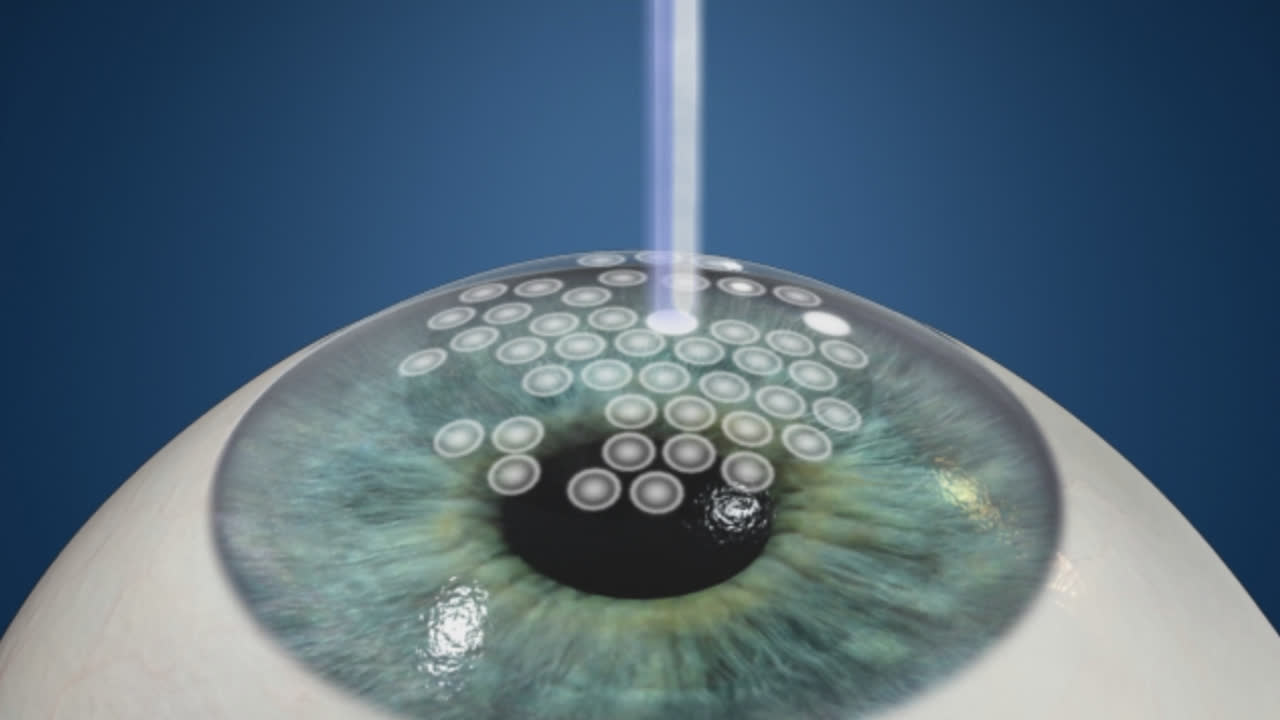
PRK can treat low and moderate degrees of nearsightedness, farsightedness, and astigmatism. The main downside of PRK compared to LASIK is that vision remains blurred and there is potential for some discomfort after treatment.
After a PRK procedure, it takes a week for the surface cells to grow back on the surface of the cornea. It takes anywhere from two to six weeks for the cells to smooth and allow for clear vision. It can take up to three months for maximum vision after PRK.
PRK patients have the option for having both eyes treated on the same day. However, if you have both eyes treated on the same day, you will typically be out of work and unable to drive for a week while your eyes heal.
For those unable to take this recovery time, you have the option of treating one eye at a time, so that you can get back to work the next day using good vision from the other eye. If you elect to have one eye done at a time, the second eye surgery will be performed two to four weeks later (depending on how quickly you recover vision).
What Signs and Symptoms Can PRK Address?
Those with nearsightedness, also called myopia, may be able to see near objects clearly, but experience blurriness when trying to see objects that are at a distance. The PRK procedure can help make distant objects clear.
Hyperopia, or farsightedness, causes individuals to clearly see distant objects, but experience blurry vision when trying to focus on objects that are close. Individuals with severe farsightedness may also experience blurry vision when trying to focus on distant objects. Both types of hyperopia can cause headaches and eye strain. PRK addresses all of the above symptoms of farsightedness.
Individuals with astigmatism may be unable to see objects clearly at any distance. This can result in the appearance of a comet-like flare around lights, as well as headaches and eye strain. PRK corrects the shape of the cornea, thereby eliminating the symptoms of this condition.
Am I a Good Candidate for PRK?
In order to be a good candidate for PRK, your eyes must be in good health. Your prescription must also be stable for at least one year to be eligible. As well, if you have thin corneas and cannot have LASIK, you’re likely to be eligible for PRK, which doesn’t require a lot of corneal tissue to be removed.
You must also be within the refractive limits that PRK can correct, which will be determined during your initial consultation. You also must not have cataracts, glaucoma or similar eye conditions.
These are just a few of many criteria that determine whether you’re a good candidate for PRK.
What Happens Before the Procedure?
Behind every PRK procedure is a detailed plan. You’ll attend a series of appointments with your eye surgeon, who will check and recheck your eye measurements.
In these appointments, you’ll be informed about what to expect and how the PRK surgery will be done. You may also be asked to provide additional information, and will have the chance to get any questions answered.
Laser eye surgery technology will be used to scan your eye’s surface and create a detailed map, also called your topography, which is what your surgeon will use to plan the procedure.
You’ll also have a WaveScan, which retrieves information about your refraction level. All of this information is uploaded to the computer which runs the excimer laser that’ll be used for your surgery.
How Is PRK Eye Surgery Done?
The procedure itself takes about 10 minutes, taking about 2-3 minutes per eye. The procedure is performed under eye drop anesthesia and a relaxing medication. You will feel a mild pressure during the PRK procedure but no pain.
First, a strong anesthetic is applied to the surface layer of the cornea (epithelium) to loosen these surface cells. The epithelial layer is then removed or moved to the site using a manual instrument.
Step 1: Layer preparation
A diluted alcohol solution is applied to the cornea to soften and dissolve its epithelial (surface) layer.
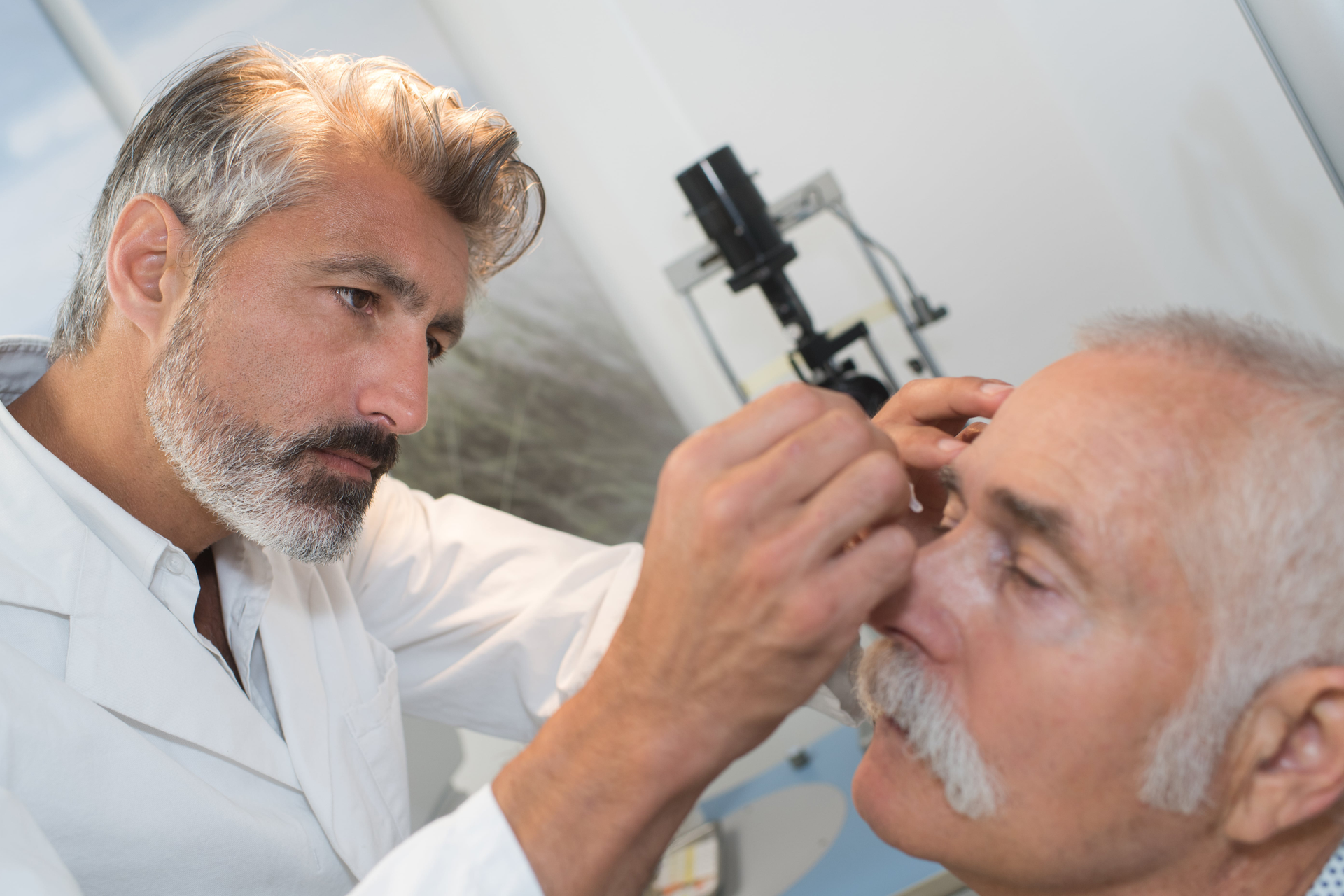
Step 2: Layer removal
The epithelial layer is then removed or moved to the side using a manual instrument. The Amoils brush is typically used because it’s specially designed to enable the effective removal of this layer in seconds.
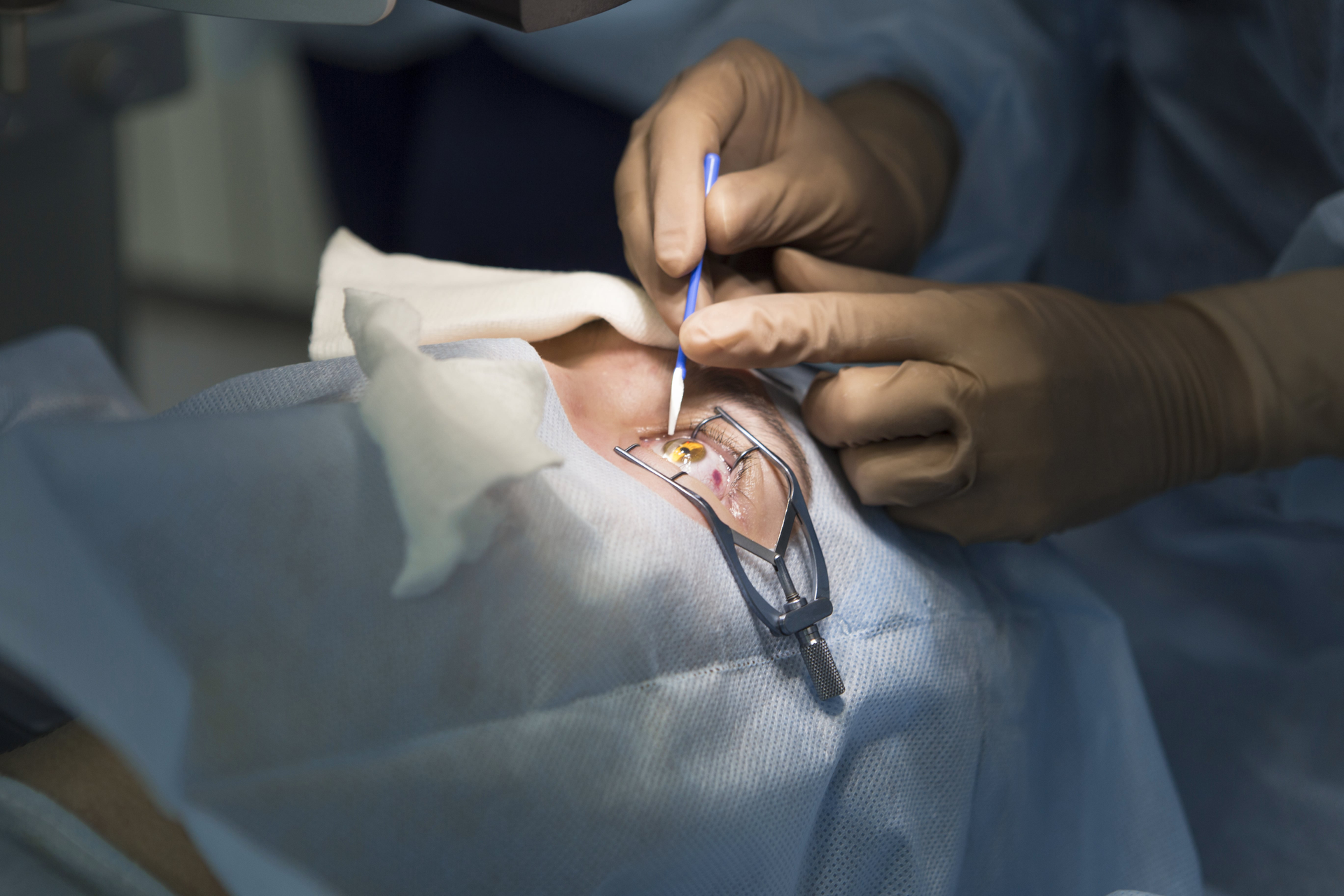
Step 3: Focus
Once your epithelial layer has been removed, you will be asked to focus on a small blinking red light. Focus as best you can on this light.
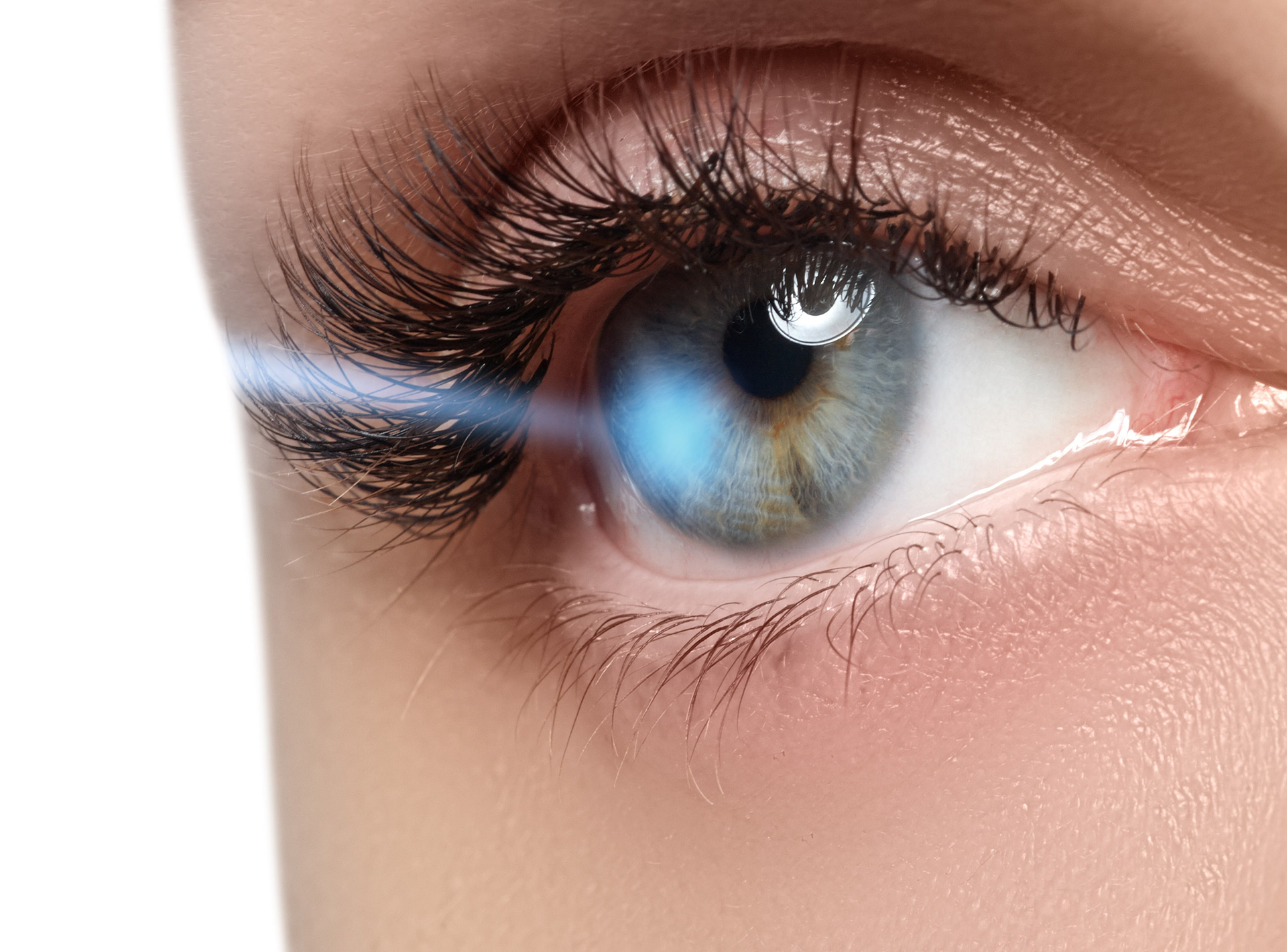
Step 4: Laser procedure
When you’re focused, your surgeon will then apply the cool excimer laser and begin the PRK procedure. A cool excimer laser is a machine that can accomplish two important things: correct refractive errors in your eyes and alter your cornea’s shape.
The laser is used to sculpt the tissue of the cornea with the purpose of correcting your vision. It accomplishes this within a matter of seconds, correcting the refractive error and improving your vision from what it was before.
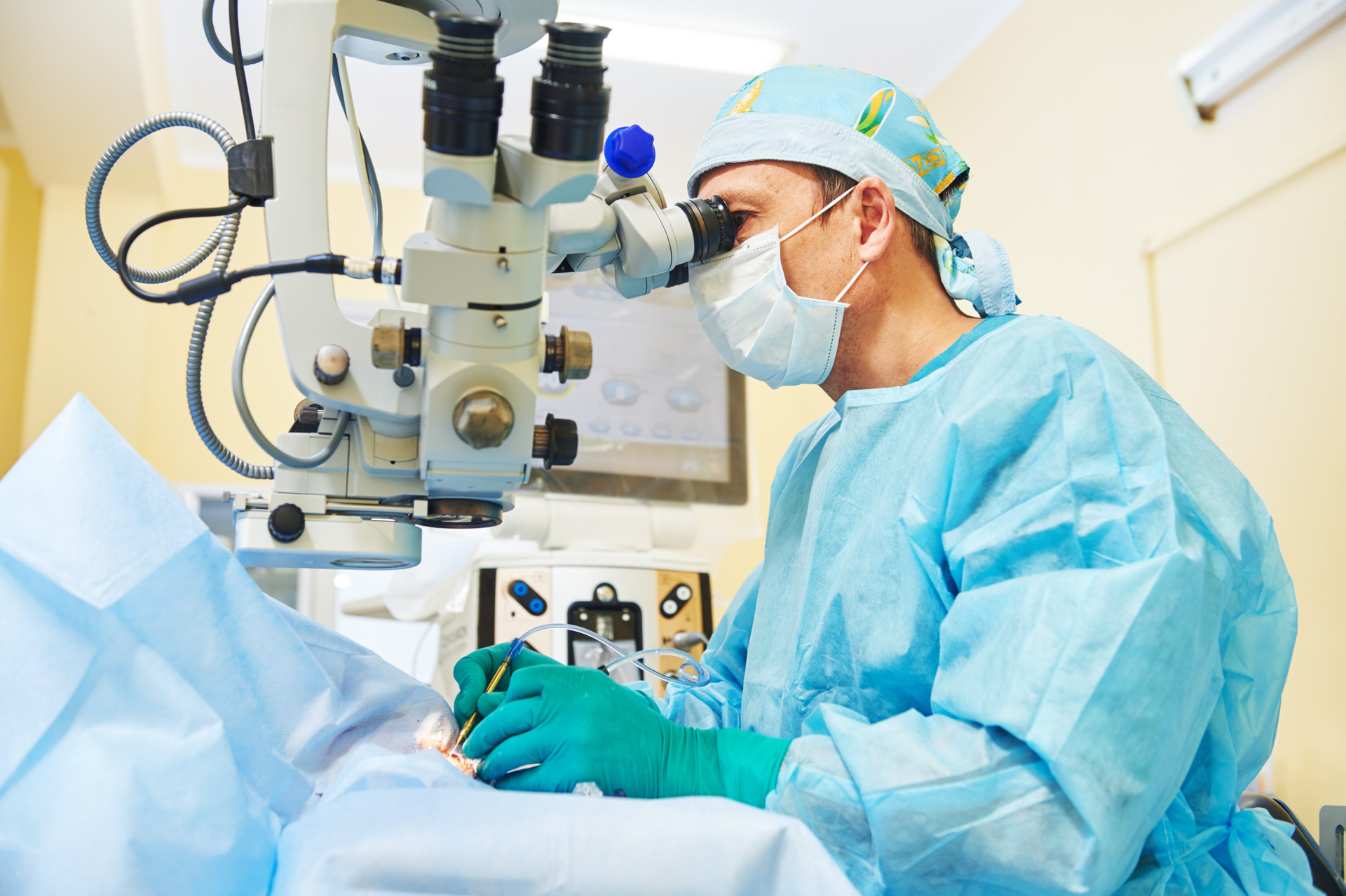
Step 5: Initial Healing
Immediately following the application of the laser, your surgeon will apply a sponge with a medication called Mitomycin-C, also called MMC, onto your cornea. MMC helps with healing, and also reduces the risk of scarring on your cornea, which can increase the risk of developing hazy vision after the PRK procedure.
After the application of MMC, your surgeon will place a bandage contact lens on your eye. This bandage will help to minimize discomfort and assist with healing.
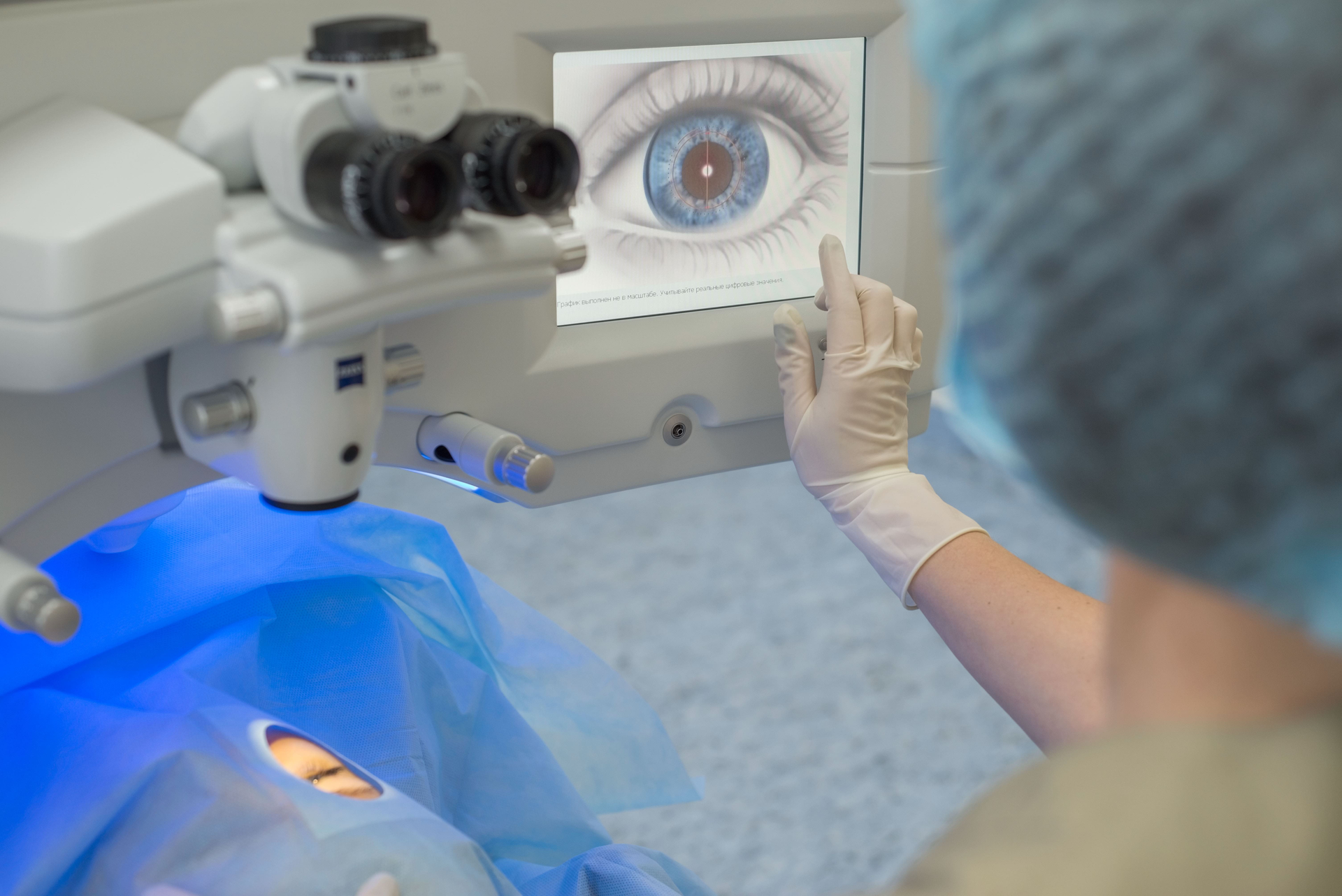
Step 6: Eye Protection
Finally, a protective bandage lens is placed over the eye until the epithelium heals within a few days. The bandage contact lens will be removed at our office about five to seven days after your PRK procedure. You can expect most if not all irritation and discomfort to disappear after bandage lens removal.
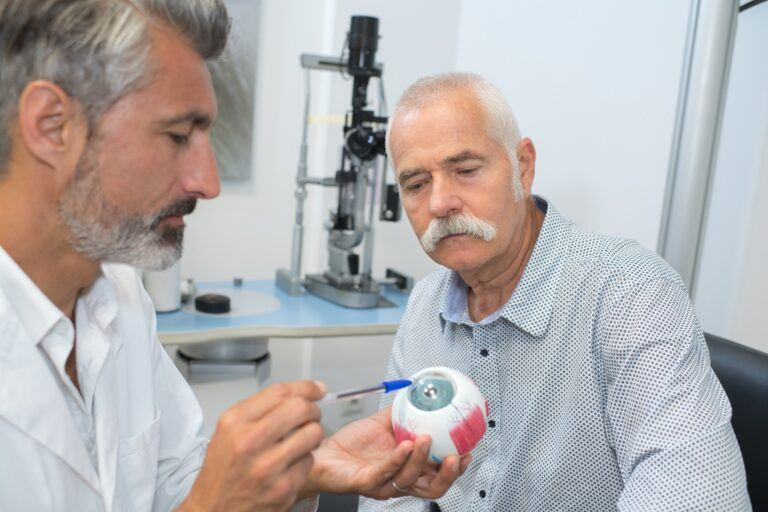
Step 7: Medication
After surgery, you’ll receive eye drops containing a steroid and antibiotic. These will prevent infection, ease swelling and assist with healing.

PRK Recovery
Right after your PRK procedure is complete, you will likely notice that you have very clear vision. But you should know that after a PRK procedure, it takes a week for your cornea’s surface cells, or epithelium, to grow back.
During this time, your vision will likely worsen. You shouldn’t worry about this, as blurry vision is very common in the first one or two weeks following surgery. Your sight gradually improves in the few weeks after the procedure.
It takes anywhere from two to six weeks for the cells to smooth and allow for clear vision. It can take up to three months for clear vision after PRK.
How Much Discomfort Should I Expect?
The amount of discomfort experienced after surgery varies from patient to patient. Most PRK patients experience mild burning, stinging, and tearing. Some patients will have no discomfort symptoms. In very rare circumstances, patients can experience severe pain.
The bandage-like contact lens we place on your eye after surgery helps alleviate discomfort. We will also provide topical drops, called comfort drops, which are drops with a mild anesthetic.
When Do I Attend My Follow-Up Appointment?
Follow-up is performed the day after your surgery. Another follow-up will be scheduled for between four and six days after the first.. At this second visit, we will monitor your healing and remove the contact lens. You will also be prescribed a topical non-steroidal drop, steroid drop, and antibiotic after your treatment.
How Many Follow-Up Appointments Will I Need?
After your first and second follow-up appointments, you’ll be scheduled to return two weeks after the procedure, and then one month. After these appointments, you’ll need to return three and six months, and then one year after your procedure.
What Is PRK’s Success Rate?
PRK vision correction has a high success rate; over 90% of people who have the photorefractive keratectomy procedure experience a notable improvement in their vision.
How Long Does PRK Last?
PRK is considered to be permanent. However, it cannot prevent eyes from aging, nor the optical conditions that can develop as a result. If you have PRK surgery at 40 years of age or older, you can expect these changes to occur.
Are There Any Side Effects?
Although PRK is considered safe and effective, you may experience the following PRK side effects:
- Light sensitivity
- Mild to moderate discomfort
- Bursts of light
- Hazy or cloudy vision
- Corrective lenses
LASEK
LASEK is a type of PRK where alcohol is used to loosen the surface cells of the cornea prior to removing them. LASEK is used when patients have had previous LASIK with a corneal flap. After 3 to 4 years, it is not safe to lift a LASIK flap because of the risk of cells growing under the flap (epithelial ingrowth).
It is also not safe to attempt to recut a LASIK flap years later because of the risk of creating irregularity by cutting through the previous flap. The only safe way to enhance LASIK with laser vision correction is with LASEK. With LASEK, the alcohol is used to loosen the underlying epithelial cells so that the initial flap is not disrupted.
Healing after LASEK is identical to PRK, although LASEK patients may have more discomfort due to the alcohol.
What Is the Difference Between PRK and LASIK?
The PRK and LASIK procedures have more than one difference. While both procedures can be performed on an outpatient basis, only LASIK is also able to be performed in an eye doctor’s office.
PRK surgery involves removing the top layer of your cornea, while in LASIK, a flap is created by cutting into your cornea’s top layer, and then replacing it once your cornea has been reshaped.
Where LASIK surgery usually requires 30 minutes or less for both eyes, PRK only requires about 10 minutes from start to finish.
PRK at Dougherty Laser Vision
PRK is a great alternative for those who are not great candidates for LASIK. It is safe, effective, and a great option to treat nearsightedness, farsightedness, and astigmatism. If you have any questions or would like to find out if PRK is right for you, call one of our locations or schedule your complimentary consultation today.
